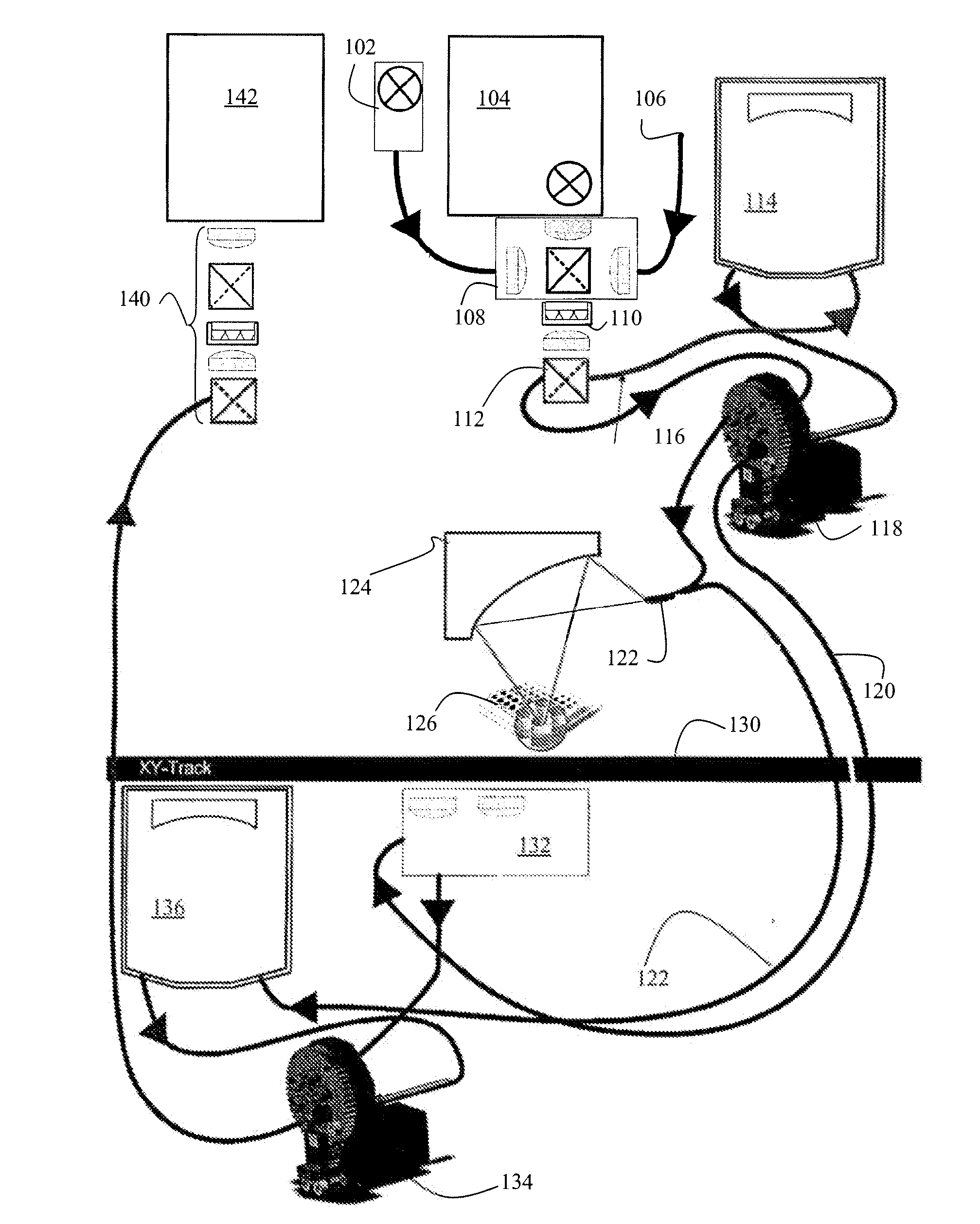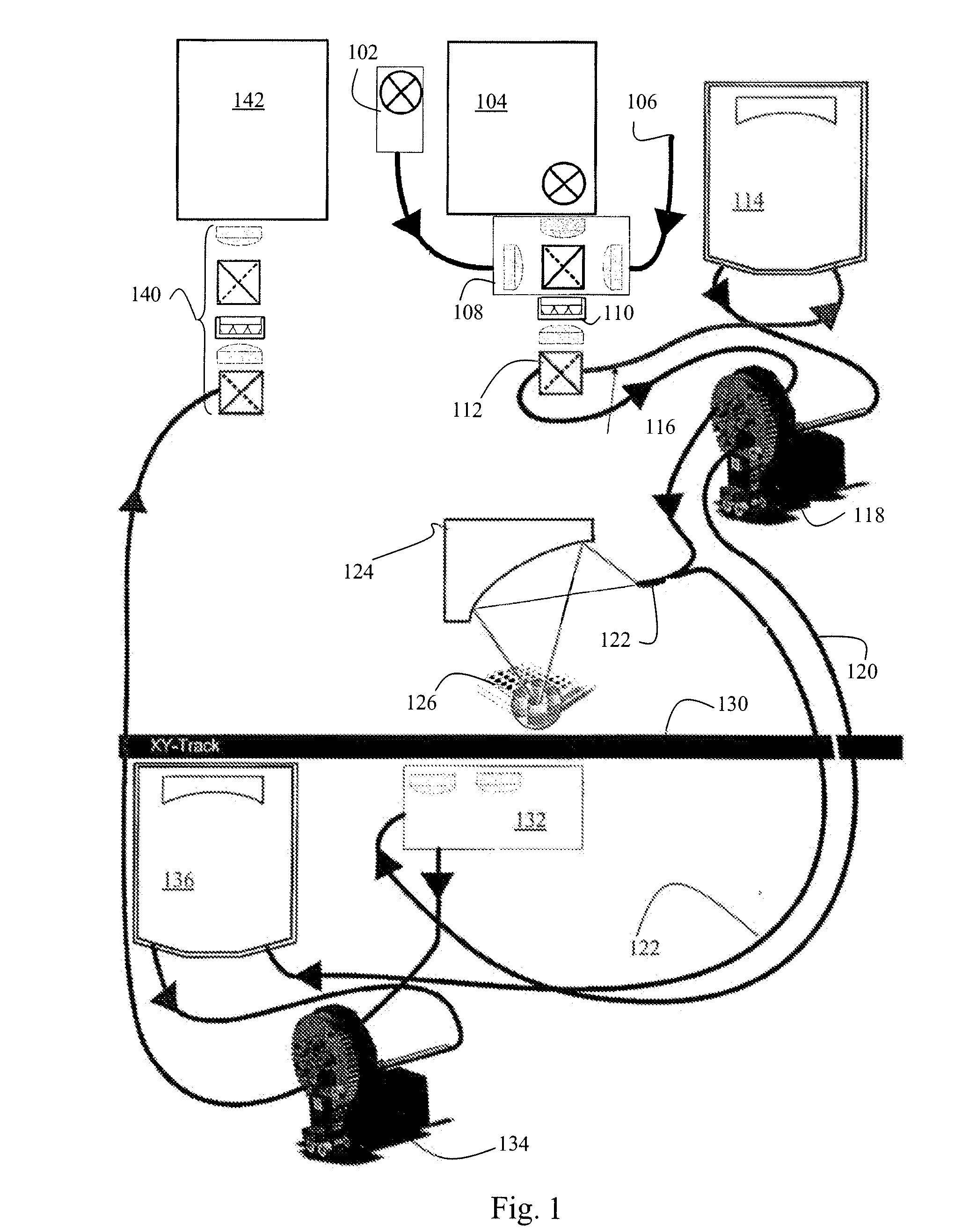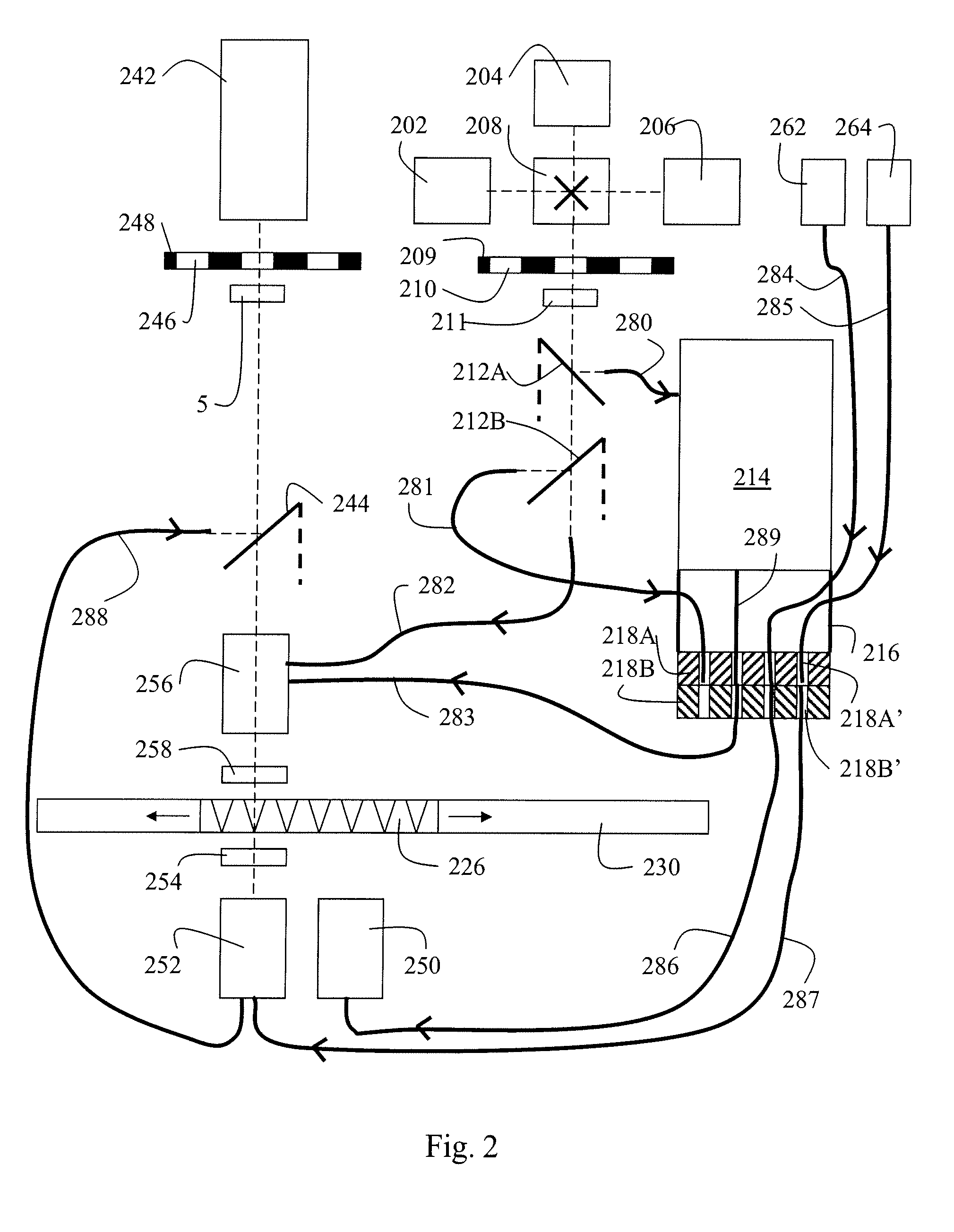Multi-Purpose Measurement System
a multi-purpose measurement and detector technology, applied in the field of optical sample detectors, can solve the problems of affecting the accuracy of the measurement results, the complexity of the measurement mode, and the one light source limitation, so as to maintain the complexity and cost of the apparatus at a reasonable level
- Summary
- Abstract
- Description
- Claims
- Application Information
AI Technical Summary
Benefits of technology
Problems solved by technology
Method used
Image
Examples
Embodiment Construction
[0035]Referring to FIG. 1, the system comprises a multiple narrow-band light source module 102, which is used in fluorescence measurements. The module 102 is connected by an optical fiber or fiber bundle to a first light source selector module 108. To the first selector module 108 is also connected a wide-band light source 104. In this example, the selector module comprises also a third input 106 for a third light source type. The light is directed to a movable mirror 112, which is used for choosing the mode of operation. In absorbance measurements, wide-band light is conveyed to a sample site of a microtiter plate 126. In fluorescence measurement, narrow-band light is conveyed to a monochromator 114, from which the light is further guided to the sample site of the microtiter plate 126.
[0036]For selecting whether the absorption / excitation light is directed to the sample site from above or from below, a light relay 118 is provided in the optical path between the mirror 112 and the mi...
PUM
 Login to View More
Login to View More Abstract
Description
Claims
Application Information
 Login to View More
Login to View More - R&D
- Intellectual Property
- Life Sciences
- Materials
- Tech Scout
- Unparalleled Data Quality
- Higher Quality Content
- 60% Fewer Hallucinations
Browse by: Latest US Patents, China's latest patents, Technical Efficacy Thesaurus, Application Domain, Technology Topic, Popular Technical Reports.
© 2025 PatSnap. All rights reserved.Legal|Privacy policy|Modern Slavery Act Transparency Statement|Sitemap|About US| Contact US: help@patsnap.com



